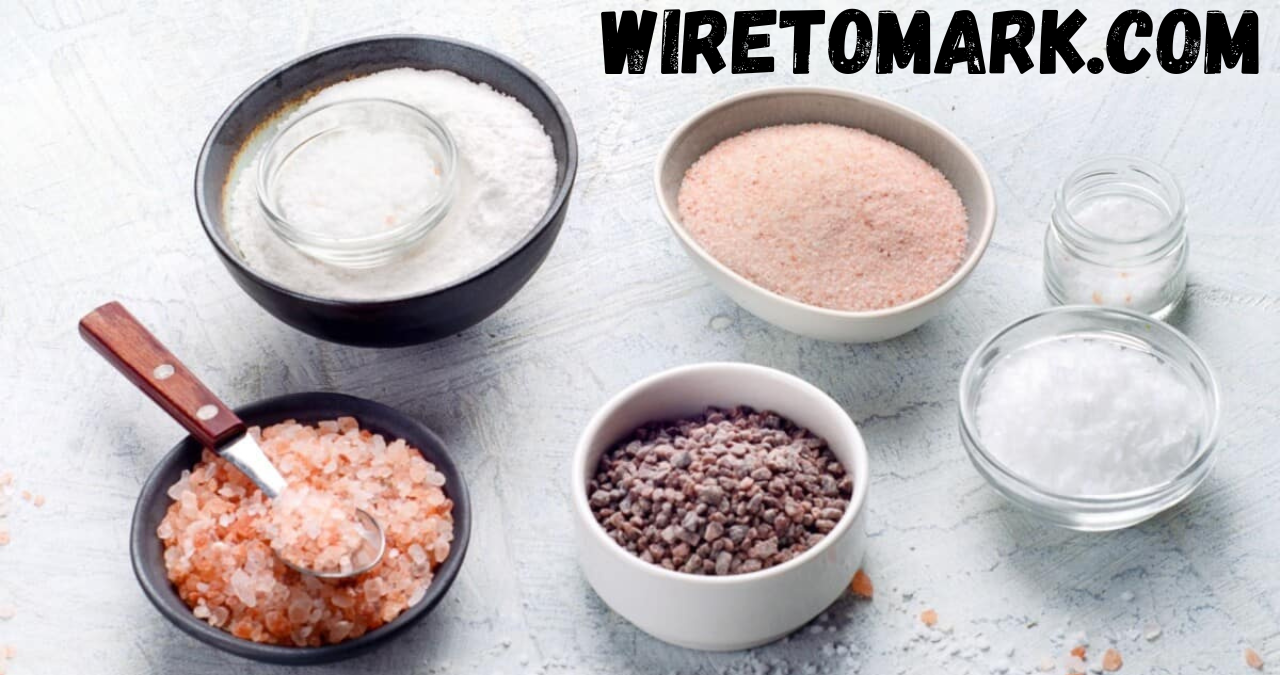Salt has been a part of human culture for thousands of years, and while it seems simple, choosing the best salt isn’t always easy. From gourmet options on fancy menus to everyday essentials in your kitchen, salt plays a central role in taste, nutrition, and even wellness. But with so many types available today, how do you decide which one is truly worth your time?
The answer depends on more than flavor. The best salt combines texture, mineral content, and culinary versatility. It doesn’t just make food taste good—it can enhance your cooking experience, support your health, and even reflect the traditions of the regions where it’s harvested. Let’s dive into the details and unpack why this everyday mineral deserves a closer look.
Best Salt for Cooking
When it comes to cooking, the best salt is often the one that suits your style in the kitchen. Professional chefs swear by kosher salt for its ease of handling and consistent results. Its flaky texture dissolves evenly and makes seasoning simple, whether you’re roasting a chicken or sprinkling it over vegetables.
Sea salt is another go-to for many home cooks. Harvested from evaporated seawater, it offers a natural balance of trace minerals. This subtle complexity can elevate simple dishes, giving them an earthy, authentic taste. If you’re someone who enjoys adding a touch of artistry to your meals, sea salt might be your best friend in the kitchen.
Best Salt for Health
For those who prioritize wellness, the best salt might not be the one that simply tastes the best. Many nutritionists recommend Himalayan pink salt, which is mined from ancient deposits and contains a spectrum of minerals like magnesium, potassium, and calcium. While it’s not a miracle cure, it does provide a natural alternative to overly processed table salt.
Still, balance is everything. No matter which option you consider the best salt for your health, it’s important to remember that moderation is key. Excess sodium can raise blood pressure and cause other complications. The healthiest approach is to choose a minimally processed salt and use it wisely rather than simply going for quantity.
Best Salt for Finishing Dishes
Some salts are designed not for cooking but for finishing. When you sprinkle them over a dish right before serving, they deliver bursts of flavor and texture that elevate the whole experience. Fleur de sel is often considered the best salt for finishing, prized for its delicate crystals and slightly moist texture. It’s perfect for adding an elegant crunch to fresh salads or even desserts.
Flaky sea salt, like Maldon, also stands out in this category. Its broad, light flakes dissolve slowly, providing a satisfying crunch and an extra dimension of flavor. If you want your meals to look and taste restaurant-quality, having a finishing salt in your pantry is a game-changer.
The Role of Minerals in Choosing Salt
Not all salts are created equal, and much of that comes down to mineral content. Natural varieties often carry trace minerals that give them unique flavors, colors, and even textures. Himalayan pink salt gets its rosy tint from iron oxide, while black salt offers a sulfuric punch that’s perfect for certain cuisines.
When thinking about the best salt, it’s worth considering whether you want something purely functional or something with added depth. Those minerals can enhance the complexity of your dishes and offer small nutritional benefits, though they don’t replace a balanced diet. The richness they provide, however, often makes them stand apart from basic refined table salt.
Why Texture Matters in Salt
One of the overlooked aspects of finding the best salt is texture. A fine grain may be perfect for baking, where consistency matters, while larger flakes can make meats and vegetables taste more dynamic. The crunch of a finishing salt changes not just the flavor but the sensory experience of a meal.
Texture also influences how salt dissolves. Quick-dissolving salts are ideal for sauces or doughs, while coarse varieties lend themselves to slow cooking or grilling. Paying attention to this small detail can transform the way you season and, ultimately, the way you taste your food.
Cultural Traditions Around Salt

Salt is more than a seasoning—it’s tied deeply to history and culture. In some traditions, the best salt is one that symbolizes purity or hospitality. In Japan, sea salt is often used in ceremonial practices. In parts of India, black salt is a staple for digestive benefits and its distinct flavor profile.
Exploring these cultural connections can open your eyes to how versatile and meaningful salt can be. The best choice might not just be about flavor but also about embracing traditions that have celebrated this mineral for centuries.
Everyday Uses Beyond the Kitchen
Interestingly, the best salt isn’t always about food. It has roles in wellness practices, beauty routines, and even household cleaning. Epsom salts, though technically a mineral compound, are used in baths for relaxation. Coarse sea salt scrubs are popular in skincare for their exfoliating properties.
In the home, salt can help clean stains, freshen up cutting boards, or even preserve foods naturally. The versatility of salt shows that the search for the best option isn’t confined to your spice rack—it extends into almost every corner of life.
How to Store Your Salt Properly
No matter which variety you choose as the best salt, storage matters. Salt can absorb moisture and odors if not kept properly, which can alter its flavor and texture. A simple airtight container goes a long way in preserving quality.
Avoid storing it directly near the stove, where heat and humidity from cooking can clump the grains. Taking a little care ensures that your salt retains the qualities that make it special, whether it’s a delicate finishing salt or a hearty cooking staple.
Balancing Flavor with Moderation
It’s tempting to think the best salt is the one that makes everything taste better—and to an extent, that’s true. Salt enhances sweetness, balances bitterness, and sharpens flavors. But like all good things, it should be enjoyed in moderation.
Learning to season with intention instead of habit can transform the way you cook. A small pinch of a high-quality salt can do more for your food than a heavy pour of something less refined. When you respect salt’s power, it pays you back with unforgettable meals.
Conclusion
Choosing the best salt isn’t about picking just one type—it’s about knowing which one fits the moment. From the kitchen to the dining table, from health to tradition, salt is more versatile than it appears. Whether you’re experimenting with Himalayan pink salt, using kosher salt for everyday cooking, or adding a final flourish with fleur de sel, each variety brings something unique to the table.



